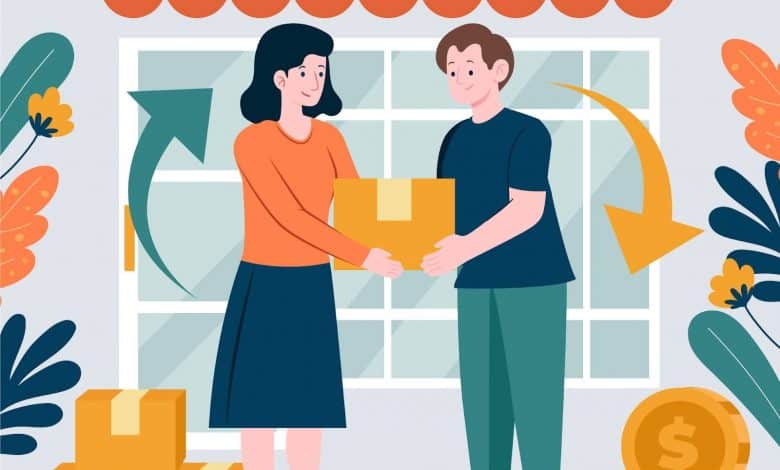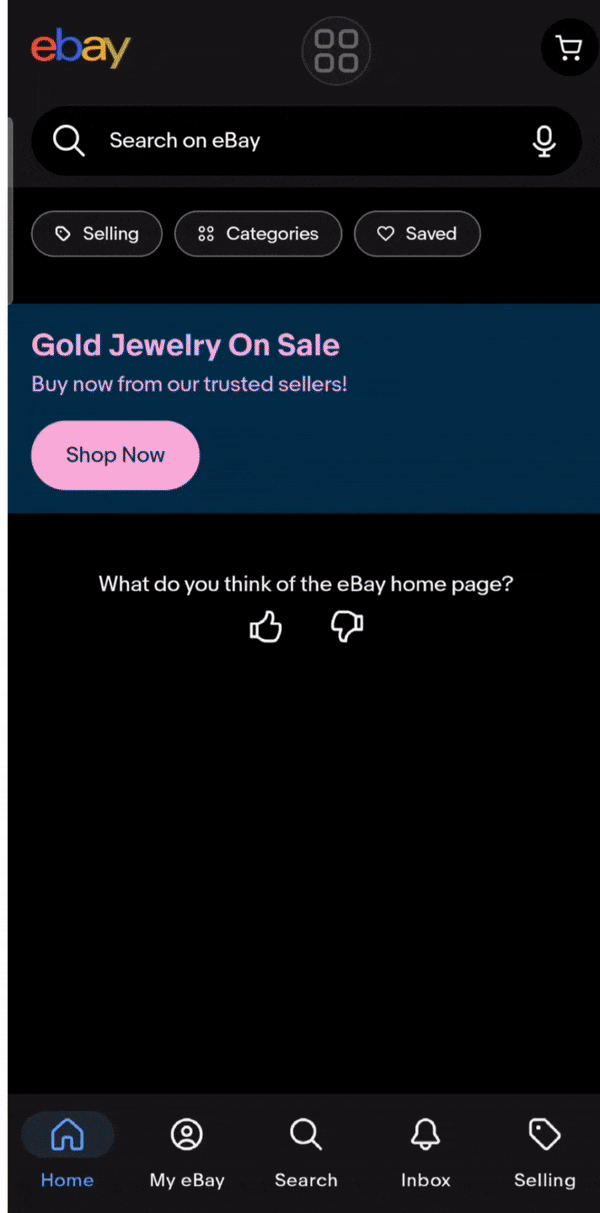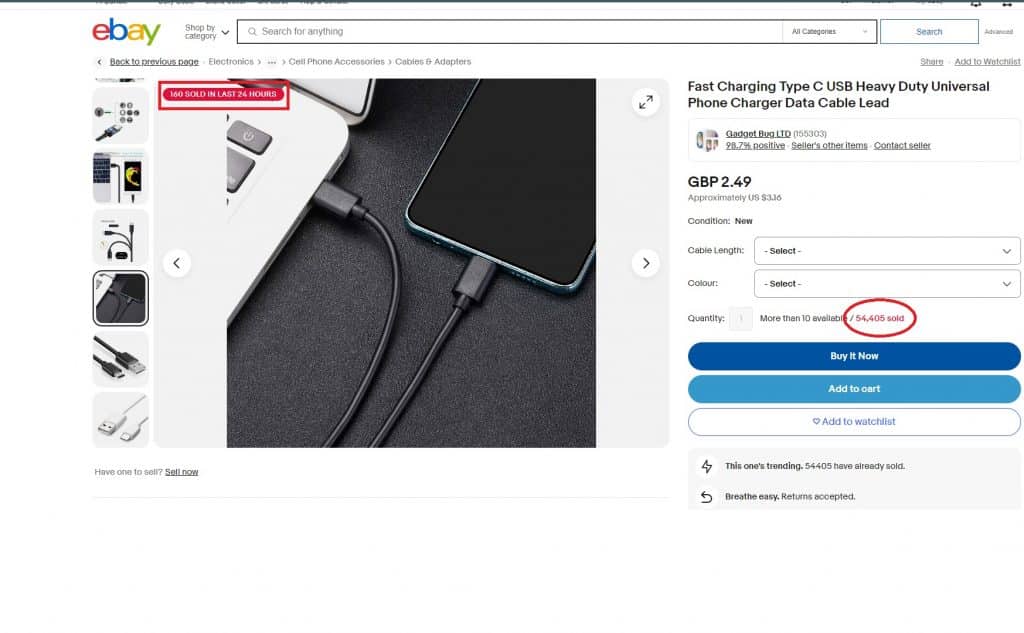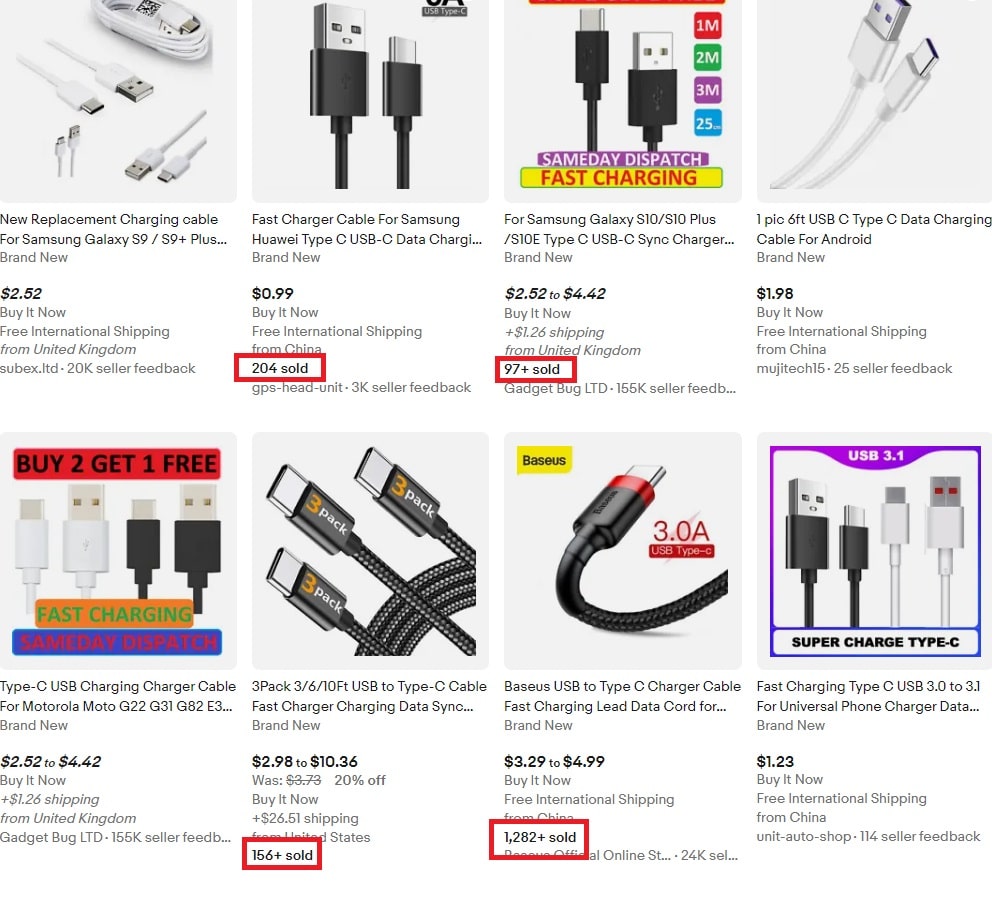Seller’s Guide to eBay Arbitrage: Strategies for Successful Reselling

Are you trying to make money from selling on eBay but don’t have that million-dollar product or trusted supplier with which to start a dropshipping business?
One way you can get your feet wet in selling on eBay is by doing arbitrage. Think of it as a way to put your shopping skills to good use by finding the best deals on different items.
But this time, instead of leveraging the discount to save a few dollars, you can turn it into a profitable business by choosing the right products to sell online.
In this article, we’ll discuss the concept of eBay arbitrage, how you can use it to generate profit, and compare it with doing arbitrage on Amazon.
What Is eBay Arbitrage?

The simplest way to explain eBay arbitrage, or arbitrage in general, is that it's the process of buying products from other stores with the intention of reselling them on another platform for a higher price.
There are multiple ways you can do eBay arbitrage. The first method is retail arbitrage. A common example of this is when an in-demand item, say a pair of sneakers, is about to be released in the market.
You can purchase the sneakers at retail price in the store, and since its demand is high with a very low supply, you can make a huge profit from the sneakers by selling them to collectors.
But that's not the only way you can do retail arbitrage. The other (and more common) way is by purchasing discounted products from a retailer like Walmart or Target. For example, suppose Walmart goes on a clearance sale and lists Hanes plain t-shirts for only $4.00 each, but on eBay, most sellers still list them for $9.00. You can buy the t-shirts in bulk and attract more buyers by listing it on eBay for $7.00, giving you a decent profit on every shirt sold.
Outside of doing retail arbitrage, the other way to do eBay arbitrage is to purchase items online from platforms like AliExpress or Temu. While this sounds eerily similar to dropshipping or even private labeling, online arbitrage is completely different.
The stark difference between online arbitrage and dropshipping is that in arbitrage you have to purchase the product first before a customer places an order. For dropshipping, you act as the middleman between a supplier and customer, which means you don’t have to store any inventory in your home, office, or a third-party fulfillment center.
Between private labeling and online arbitrage, the biggest difference is that the products you sell won't be under your brand. In private labeling, you'll be in charge of the branding and packaging of the product. Meanwhile, in online arbitrage all you do is buy a discounted item and resell it on another platform at a higher price.
How to Get Started With eBay Arbitrage
Starting a buy-and-sell business on eBay is a simple process. The first thing you need to do is register as an eBay seller.
To register, open the dropdown menu on My eBay and click on selling. Creating an account is fairly easy since you’ll only need to input your email address, phone number, and make a password.

Once you’ve set up your account, the next step is to verify your contact details. You’ll be asked to add your credit card information, and register as either an individual or company account.
However, this verification process only occurs when you attempt to add a listing.
For arbitrage purposes, it's often best to register your business as an individual account.

Since eBay functions similar to Amazon, you should expect to pay several seller fees whenever you try to sell an item on eBay.
Fees when selling on eBay
On eBay, there are two main fees you should be aware of: Insertion fees and final value fees.
An insertion fee is charged when you create a listing. This fee will depend on the price of your listing and which category your listing falls in, whether it's a fixed-price or auction-style listing.
However, eBay does give its users 250 free listings each month (this includes listings that have been relisted and posted in more than one category). The minimum amount you’ll have to pay once you’ve used up your 250 free listings is $0.35 per listing.
If you have an eBay store, the insertion fee will be waived.
The downside of having an eBay store is that you will have to pay a monthly subscription fee depending on the type of store you create.
| Store type | Store fee per month (monthly renewal) | Store fee per month (yearly renewal) |
| Starter | $7.95 | $4.95 |
| Basic | $27.95 | $21.95 |
| Premium | $74.95 | $59.95 |
| Anchor | $349.95 | $299.95 |
| Enterprise | No plan available | $2,999.95 |
Final value fees are charged whenever you sell an item on eBay. It’s a percentage, usually around 3% to 15% of the item, and is calculated as a percentage of the total amount of the sale, plus $0.30 per order.
If a buyer returns or asks for a refund, you are given free credits as long as the reason falls under eBay’s fee credits policy.
How Do You Find a Product to Sell on eBay?
Before buying items that are on sale online or in a physical store, be sure to always do your research.
Would customers want to buy this item? Is this product even allowed to be sold on eBay? These two questions should be answered before anything else.
It’s critical that you identify products that will give you a good profit margin instead of buying it simply because it’s on sale. To solve this problem, it’s best to use keyword research tools such as Jungle Scout and Helium 10.
Some of the data you can find include its search volume, the number of units sold for that certain keyword, how many people are selling that product, and how much revenue it can generate.
Although both tools provide data from a totally different platform, items that are in demand on Amazon will have a good chance of selling on eBay too. By leveraging different software, it removes any guesswork and gives you knowledge on what type of products can do well immediately.

If you don't want to invest in any tools, the good news is that there are other ways you can find good, profitable products on eBay for free by simply using their website or app. The first method is by using eBay's built in scan to list tool which you can find when you go to Selling > List an item.

It's an easy, straightforward way that can help you save time and do any guesswork. When you enter Walmart or Target and find a product that you think could do well on eBay, simply scan the item's barcode on the app and wait a few seconds for eBay to recognize the item.
Once the item has been found, eBay will immediately provide basic information including the name of the product, stock images, product description, and suggest a starting price based on their historical data. All of the pre-filled information given by eBay is customizable before you list an item. As a seller who's thinking of starting an arbitrage business on eBay, having a scanner app will help you determine early on how much you can expect to make from a certain product.
Related Reading: The 5 Best Amazon Arbitrage Seller Scanning Apps
The next method is by checking a category and sorting the items in that category according to best match. By doing so, this gives you a good idea of what products customers often look for and purchase when shopping on eBay.
If the product you want to sell isn't on the best seller category but think it has the potential to do well on eBay, you can try manually searching the items and see how many units have been sold from different sellers.
You can do this in two ways. One is by clicking a particular listing and see how many units have been sold beside the Quantity of items you want to purchase.

The more time efficient way to check if an item has potential is by checking the item in Gallery view.

The last option is to take advantage of eBay's built-in product research tool (Terapeak). This tool gives you insights to sourcing, sales trends, and locations of both sellers and customers. However, only certain features of Terapeak are free depending on your store's subscription.
What Kind of Products Should You Sell on eBay Through Arbitrage?
When finding a good product, just about anything has the potential to do good on eBay as long as you upload the right images, use the right keywords, and allocate funds to ads. In terms of product categories, Oberlo found that most shoppers on eBay purchase items related to electronics and accessories. These types of products can range from cell phone cases, adaptors, or brand specific items such as an Apple Watch or Sony PlayStation.
An example of a good product you can sell on eBay are collectible items like sports cards. It's an item that's lightweight and has the potential to make you millions as long as you do your research and sell at the right time.
In fact, of the most expensive items ever sold on eBay, the first product that wasn't related to real estate or the automotive industry was a Honus Wagner Baseball Card which sold for $1.1 million.
| Product | Price |
| 405-feet-long Gigayacht | $168,000,000 |
| Gulfstream II jet | $4,900,000 |
| Lunch with Warren Buffett | $2,600,000 |
| Town of Albert, Texas | $2,500,000 |
| Home in New York with an underground bunker | $2,100,000 |
| Town of Bridgeville, California | $1,770,000 |
| Honus Wagner Baseball Card | $1,100,000 |
| Ferrari Enzo | $1,000,000 |
| Joe Jackson’s baseball bat | $577,610 |
| Everything Ian Usher owned | $309,292 |
Another good example of a product you can sell on eBay is a cell phone charging cable. It's lightweight, which means you can save on shipping and doesn't take much space if you store them in your home. It's a non brand specific product, which gives you the opportunity to find the cheapest option. According to one study, the cell phone charging market is expected to have a compound annual growth rate (CAGR) of 6.63% in the next 5 years.
For other ideas, you can also check out our top 100 eBay Sellers of the month article to give you an overview of what type of stores have done well on eBay.
Now that you’ve done your research and verified that a certain item can be sold on eBay and has a good chance to make you money, the next step is to find that particular product. The first option would be to check online shopping apps or to visit your nearest Walmart.
One way you can find the best product to sell on eBay is by visiting Alibaba (China’s version of Amazon). This article won’t go too in depth with the process of finding the right products since we do have this mega guide that can teach you everything you need to know.
If you want to know how you can properly negotiate with a supplier and guarantee you won’t get scammed due to possible language barriers, we’ve also made a separate article on the five packing questions you need to ask before making an order on Alibaba.
But if you strike out on finding a good deal online or through a brick and mortar store, your next options to finding products to resell on eBay are by visiting thrift stores, garage sales, trade shows, or attending auctions.
Pro tip
If you have an eye on a certain item, it also helps to invest in a price tracking tool so that when a “sale” does come, you can determine whether the item is really being sold at a lower price or as an advertising strategy.
eBay Arbitrage Best Practices to Generate Profit
In a platform that has over millions of sellers posting products each day, it can be hard to try and convince customers to choose your product over everyone else. After all, arbitrage is a business model that’s been around for years.
So, if you want to be successful doing it on eBay, you’ll need to know the best practices to avoid making mistakes that most sellers will go through.
Know which products can be sold on eBay
Another misconception some sellers have is that you can sell anything on eBay since there aren’t many restrictions on selling even used items.
There is a list of product categories that are restricted on eBay, and failure to abide by their guidelines can result in the following consequences:
- Products getting demoted or hidden from an eBay search
- Canceled listings
- Lower seller rating
- Account suspension
- Buyer and seller restrictions
Understand all the fees that come with selling on eBay

Even though you already have a basic understanding of the basic fees of selling on eBay, given that we’ve mentioned them in a previous section, this practice can’t be underestimated.
The last thing you want is to incur random fees that you have no idea about, causing lower profit margins for your business. The tricky part when selling on eBay is that the fees will depend on multiple factors.
Outside insertion fees, you can incur a $9.95 fee if you choose to have your product be listed as a classified ad— a listing where you state an initial price and negotiations between you and the customer are done outside eBay.
You may even incur additional final value fees (a 6% charge from total sales billed in the following month) if you don’t meet eBay’s minimum seller performance standards. This is a monthly inspection by eBay to ensure your business didn’t result in a poor experience for the buyer.
This fee is only waived if you are either an Above Standard or Top Rated Seller, making it an important practice to often check your standing by visiting your seller dashboard.
If you allow your customers to pay using PayPal, you’d also have to pay a minimum transaction fee of $.30 plus 2.9% of the item’s sold price.
Another fee that you need to pay for that doesn’t get talked about enough are shipping fees.
Unlike Amazon’s FBA program, sellers on eBay are responsible for inbound and outbound shipping fees on every item sold which varies depending on your shipping provider.
Prepare for customer returns and refunds

While eBay doesn't require its sellers to have a return policy, having one does help make your store more credible. If you’re dealing with returns on eBay, understanding eBay's policies is the best way to avoid any headaches.
There's no foolproof strategy for avoiding customer returns. The best way to solve this issue is to have a clear return policy to minimize the likelihood of scams. If a return or refund request is valid, be sure to respond professionally within three business days; otherwise, a customer can request eBay to step in and handle the issue.
To help you on your journey of selling on eBay, here’s a video of Mike discussing the 5 things you should do before selling on the platform.
Pros and Cons of eBay Arbitrage
As one of the most prominent ecommerce platforms in the world, there are always pros and cons to doing arbitrage on eBay.
Advantages
- Limited requirements and capital to get started
- Cheaper seller fees compared to Amazon
- Low risk business model compared to private labeling
- Auction feature
- Freedom to choose different products
- More leeway to sell used items compared to Amazon
Disadvantages
- Finding a place to stock your products
- Purchased products could be damaged or have defects
- Need to wait for when products go on sale
- Product returns and refunds
- Listing limits
- Harder to scale
How Much Money Can You Make on eBay From Doing Arbitrage?
The answer to this question ultimately depends on the type of product you sell and how much time you’re willing to spend investing in your arbitrage business. Some reports say 62% of sellers can make $5,000 a month while another claims you can even make over $10,000 a month with a 10-30% profit margin.
The beauty of doing arbitrage on eBay is that you can do it from anywhere in the world. Customers in a different country who click on your product will automatically get an approximate price and shipping fee of the currency depending on the location they set on eBay to give them an idea the product is from an international seller.
Once you have an order from outside the United States, all you have to do is ship it to one of eBay's shipping hubs.
From there, eBay will handle the rest of the logistics processes. If your package arrives intact in the hub but arrives damaged to the customer, eBay will issue the refund to the customer and you will still earn money from the sale. If an item arrives late to your customer, it won't affect your seller rating either.
For a product to be eligible for international shipping, it must meet the following requirements
- Order is less than $1,000
- Item must be located in the US and posted on eBay's website
- It does not exceed the weight limit of the country your customer is located
- The max length and girth of the package is 84”
- Earned at least 10 feedback points as a seller
- Made a sale 90 days ago
- Item must not be related to video games, hunting knives, auto parts, and vehicles
Sellers on eBay whose products are registered in the US will also have the benefit of not having to pay an additional international fee once a product is sold. If you do make an international sale on a product that wasn't eligible for eBay international shipping, you will be charged an additional international fee which is around 1.65% of the total amount of the sale.
For eBay sellers who live outside the US, the international fee varies depending on the registered country of your eBay store.
Is It Better to Do Arbitrage on eBay or Amazon?
The debate between selling on Amazon vs. eBay often pops into a seller's mind, leading them to think they should focus more energy on one platform over the other.
The best solution is still to list your items on both platforms to have more eyes on your listing, but if you’re fixated on doing arbitrage on only one platform, here’s how you can make that decision.
If you’re merely doing arbitrage as a side hustle, then go for eBay. Overall, the fees to sell an item are lower compared to Amazon and there’s less competition.
On the other hand, if you want to sell online as a full time business, Amazon is the better choice thanks to Amazon FBA and multi channel fulfillment (MCF).
One of the biggest issues of selling on eBay is that you have to run every aspect of your business from managing inventory and dealing with returns, even if you hire a third party fulfillment center.
With FBA, Amazon handles the entire shipping process, stores your inventory, and manages any possible returns or refunds.
For multi-channel fulfillment on Amazon, it allows you to sell your items on another platform, say eBay, and have Amazon take care of the entire fulfillment process. This does come with another set of fees, but you can choose to set up MCF orders yourself or use tools to help you automate inventory from different channels.
If you want to learn the ins and outs of doing arbitrage on Amazon, we’ve made a detailed guide for you to read as well.
What Are Other Ways You Can Make Money on eBay?
If you're an entrepreneur looking for a scalable business, arbitrage may not be the best option. The products you sell are limited to when shops go on sale, and if you buy items in bulk, you spend too much money upfront and will have trouble finding a place to stock your items.
Luckily, there are other ways you can make and save money on eBay outside of doing arbitrage. Below, we explore the other ways you can make money selling on eBay.
Selling refurbished items
Rather than focusing on products that are brand new, you can make money by setting your eyes on products that have been used or refurbished.
If the product isn’t under eBay’s prohibited and restricted items policy, eBay will undergo a rigorous refurbishment process to ensure they meet specific quality standards. If accepted, the item will have a refurbished label, signifying that they have been restored to a like-new condition.
From a customer’s perspective, the eBay refurbished program is a good alternative since they’ve been given eBay’s stamp of approval and costs cheaper than brand new items.
To qualify for the eBay Refurbished program, you must meet the following requirements:
- Proven Selling Track Record
- Quality Refurbishing
- Compliance with eBay's Seller Policies
Dropshipping

Another low risk, inexpensive business model you can use to make money on eBay is dropshipping.
Once a customer makes an order, as the seller, your only job is to contact your supplier that an order has been made for a certain item and ensure it gets to your customer on time.
eBay has no problems with dropshipping as long as you own the items or have a user agreement with a wholesale supplier to list and sell their items.
To be a successful dropshipper, the most important thing you need to do is find a reliable supplier.
Related reading: Ultimate Guide to Dropshipping Returns and Refunds
Final Thoughts
eBay arbitrage can be a great gateway for sellers to get started into the world of ecommerce.
You can use it as a side hustle or even as a full time business since it doesn’t require a lot of upfront costs to get started and you can simply purchase the item only once a sale has been made.
However, if you’re looking for a business you can scale, arbitrage isn’t the best option because of the lack of products available for you to resell at a higher price.
First time sellers might encounter some minor bumps here and there, but in arbitrage, there are different tools you can use to make the overall process easier.
Nonetheless, if you play your cards right and continue to do research on different products, then there’s a good chance you can make a decent profit from doing arbitrage on eBay.



